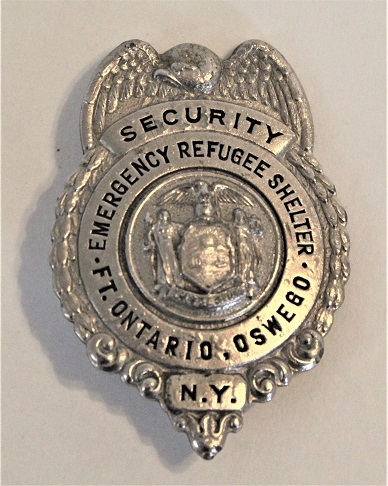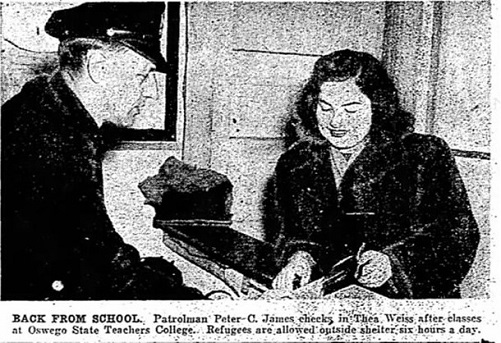‘History on Tap’ Reveals Refugee Research and Artifacts
July 7 at Steamer’s in Oswego -
OSWEGO, NY - Current research on refugees of the Fort Ontario Emergency Refugee Shelter and newly-acquired artifacts will be discussed on Wednesday, July 7, at the monthly “History on Tap” program at Steamer’s Restaurant in Oswego. Admission is free and open to the public.
The program begins at 7 p.m. The public is invited to purchase refreshments and learn about Oswego’s unparalleled history in a friendly atmosphere overlooking the Oswego River.
Evelyn Fredericksen and Marilyn Huntingdon of the Safe Haven Holocaust Refugee Shelter Museum and Fort Ontario State Historic Site are conducting research and building up files on each of the approximately 1,000 Holocaust refugees who were interned at the Fort Ontario Emergency Refugee Shelter. They are actively collecting and seeking copies of documents, photographs, newspaper articles, and other materials for use in interpretive projects, exhibits, and publications.
Photographs of some of their discoveries will be displayed during the event. Fort Historian Corey King will also present images of shelter-related artifacts acquired by the Friends of Fort Ontario and donated to the collection of the state historic site.
“Fort Ontario in Oswego, NY was the only shelter for Holocaust refugees in the United States during World War II,” said Paul Lear, Fort Ontario State Historic Site Director. “It is where the Holocaust came to America; where every day Americans first encountered a large group of victims of Nazi persecution and heard their personal stories of survival firsthand. It is where reporters finally found Holocaust stories they deemed worthy of headline coverage after years of burying them in the back pages of American newspapers.”
Fort Ontario is also considered by many to be the birthplace of American refugee policy because it is where the first group of undocumented refugees obtained asylum in the United States.
Steamer’s Restaurant is located at the Clarion Inn at 70 E. First St. (State Rte. 481) in Oswego. For more information on History on Tap, contact Paul Lear at 315-343-4711 or Paul.Lear@parks.ny.gov. Updates and program information will be posted on the Friends of Fort Ontario Facebook page at https://www.facebook.com/FortOntario/. For more Oswego County history go to visitoswegocounty.com.

Friends of Fort Ontario recently donated the badge of Patrolman John Kaplinski to the collection of Fort Ontario State Historic Site. Kaplinski was a retired soldier and a member of the small civilian police force which guarded the Fort Ontario Emergency Refugee Shelter. The Friends acquired the badge from Oswego native Larry Van Horne, who received it from Kaplinski’s widow. Because of the small size of the shelter’s police force, the badges are very scarce and the only one other one known to exist is in a private collection. The badge is also one of the most iconic and significant artifacts ever acquired because it symbolizes the imprisoning nature of the shelter where refugees were unable to leave without a pass, work outside, or get on with their lives in the United States or elsewhere. (Collection of Fort Ontario State Historic Site, NYSOPRHP.)

The small civilian police force at the Fort Ontario Emergency Refugee Shelter worked out of the red brick army guardhouse which now houses the Safe Haven Holocaust Refugee Shelter Museum. Officers patrolled the military reservation and checked the passes of refugees as they passed in and out of the old military reservation via the East Seventh Street Subway (tunnel). In this photograph taken inside the guardhouse, Patrolman Peter C. James checks the pass of Yugoslavian refugee Thea Weiss. Refugees were issued six-hour passes to leave the shelter, but they were not allowed to travel beyond city limits until the summer of 1945, when the distance was increased to 25 miles. (Syracuse Herald-American. 6 January 1946, Sunday.)




